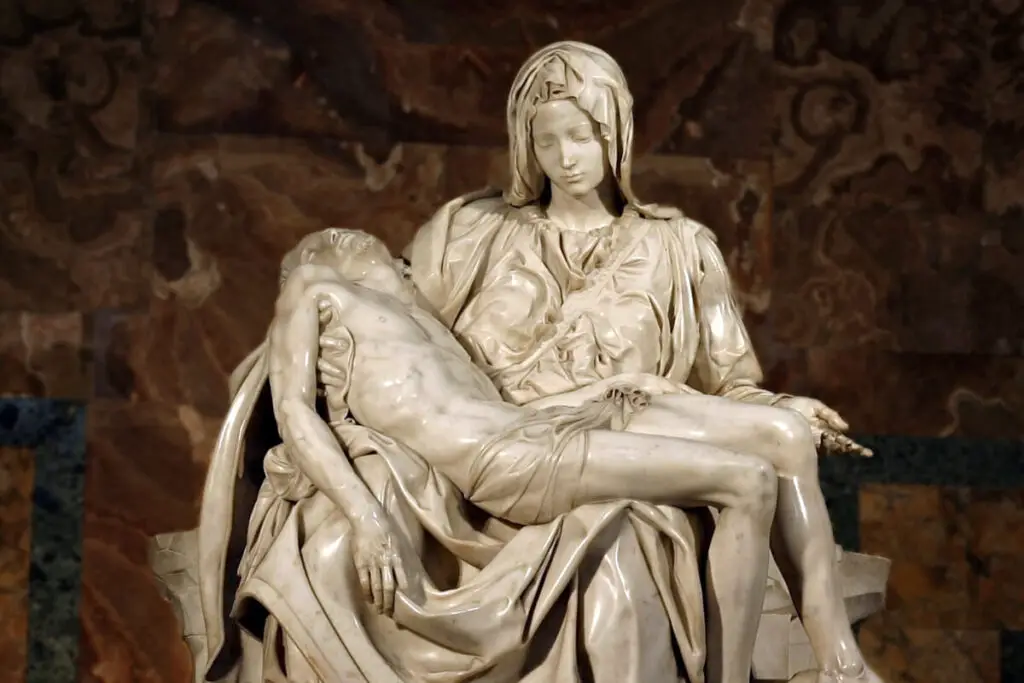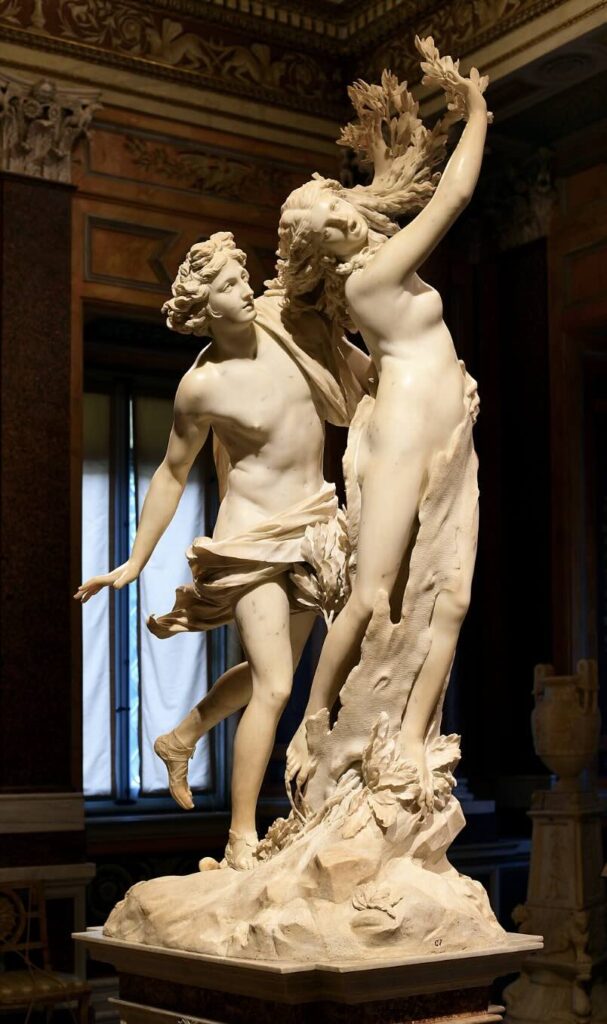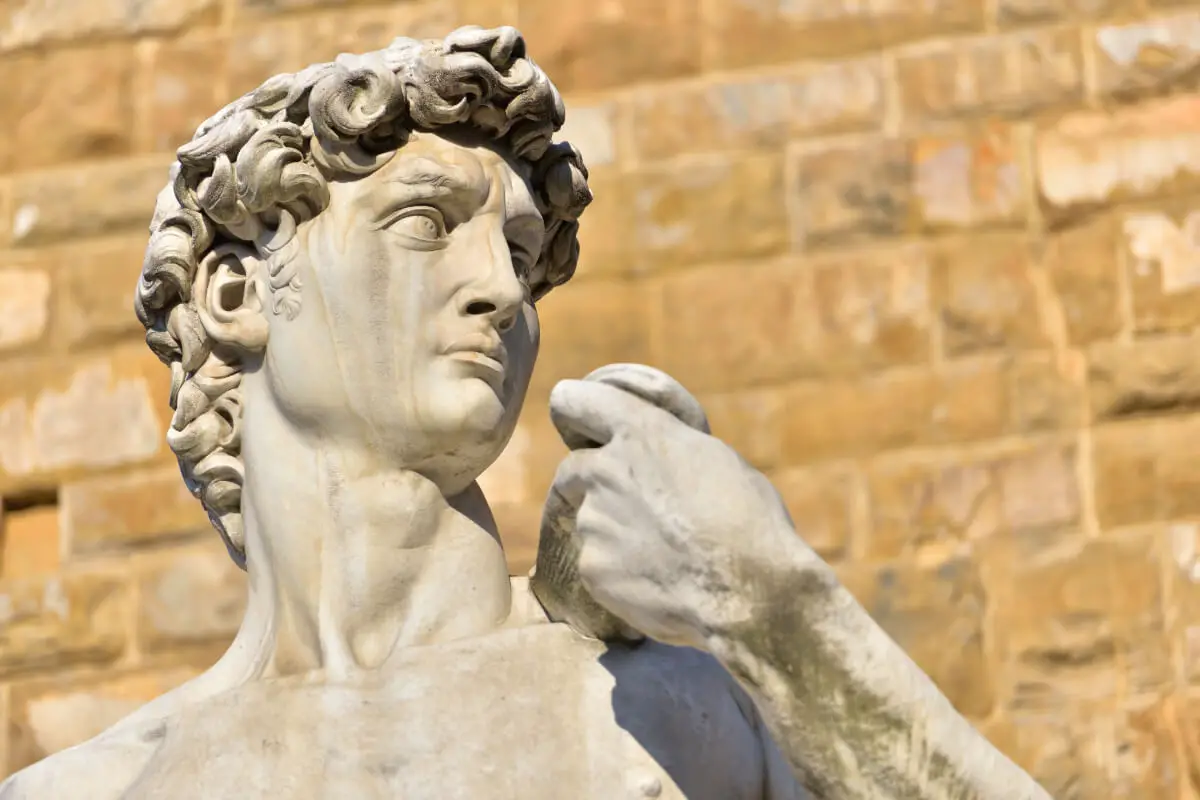Infused with distinct symbolism and imbued with meticulously crafted design, Renaissance statues stand as eloquent testimonies to the advent of a new artistic age that embarked upon uncharted territories of human expression. Born out of the time’s profound social, political, and philosophical shifts, these evocative works of art encapsulated a revolutionary spirit and introspective gaze that ceaselessly inspires even today.
This journey into the world of Renaissance statues delves into their emergence, their creators, the multilayered symbolism they bear, and their enduring influence on subsequent artistic movements. Prepare to explore some of the finest contributions from renowned artists like Michelangelo and Donatello and unravel the intricate tapestry of stories and meanings they wove into their masterpieces.
Table of Contents
- The Emergence of Renaissance Statues
- Iconic Renaissance Statues and their Artists
- Symbolism and Meanings in Renaissance Statues
- Renaissance Statues’ Influence on Later Art Movements
- Related Questions
The Emergence of Renaissance Statues
The Dawn of Beauty: Renaissance Influence on Statue Creation
Ask any art lover – they’ll tell you that the Renaissance wasn’t just a period; it was a rebirth, a celebration of beauty, and a marvel of creative exploration. One of the art forms profoundly influenced during this period was the creation of statues.
Why so? Well, rewind to the Middle Ages; sculptures were often straightforward and rigid, adhering to religious narratives, primarily created to decorate churches. The Renaissance changed that, giving birth to a renewed vision of what a sculpture could be. This period was marked by intellectual curiosity and the refinement of artistic techniques, significantly changing the creation and perception of statues.
An essential element to understand is that artists returned to ancient Greek and Roman influences during the Renaissance. Known as the Classical Antiquity period, these statues heavily emphasized realism and ideal beauty and were shrouded with an intrigue that fascinated the Renaissance artists. The statues of this era exuded a sense of grace and harmony that Renaissance sculptors aimed to revive and imitate. The re-adoption of contrapposto, a pose in which the figure’s weight is placed on one foot, making the body twist slightly, was a premier Greek innovation reinstated, adding a sense of realism and dynamism to the sculptures.
Furthermore, a new sense of individualism crept into the craft of sculpting during the Renaissance. In contrast to the anonymous statues of the Middle Ages, artists began to observe and portray the distinct features of their subjects keenly. The essence of human emotion, physical attributes, and even the drapes of clothing were intricately captured and reproduced in the statues. This realism showcased the inherent beauty of the human figure and profound emotional depth, a trademark of the Renaissance spirit.
Renaissance art was also marked by exploring perspective, forms, and anatomical correctness. Artists started considering the viewer’s interaction with the artwork, keenly focusing on how a statue would look from various angles. This fusion of perspective and space was a game-changer in the artwork world, transforming the visual language of statues.
Another significant shift brought about by the Renaissance was the introduction of secular themes in the artwork. It was no longer purely religious. Mythology, notable figures from history, and even interpretations of daily life began to echo in bronze and marble. This broadening of themes enriched the world of sculptures, making them accessible and relatable to an extended audience.
While the Renaissance’s influence on statue creation is undeniable, it is not just a historical footnote. It served as an opening act for the grand theatre of human creativity, setting up the principles of statue creation and influencing countless subsequent artistic periods. Each statue from this era reflects the artistic development and intellectual growth during the Renaissance, embodying the curious spirit and the hunger for beauty and realism that typified this extraordinary period.
Iconic Renaissance Statues and their Artists
The Renaissance period, a dynamic era of rebirth, offered an artistic revolution through paintings and induced many significant changes in sculptural works. The presence of High Renaissance statues, in particular, is a masterpiece that is emblematic of this period and continues to astound patrons today.

One cannot discuss the Renaissance without mentioning one of the most renowned artists, Michelangelo Buonarroti. David, arguably the epitome of Renaissance sculpture, is his iconic masterpiece.
Taking three years to complete (1501-1504), the statue stands 17 feet tall, a testament to the grandeur and ambitiously heroic human spirit the Renaissance celebrated. Michelangelo’s beautifully executed craftsmanship and understanding of human anatomy defied the norms of his time. David displays sublime detail, from the tension in his hand to the veins pulsating on his arm. Hewn from a discarded block of marble, David loudly announces the prowess and skill of its creator.

Michelangelo’s Pieta, carved before David, also commands acknowledgment. The emotive masterpiece presents the Virgin Mary cradling the lifeless body of Jesus Christ post-crucifixion. The profound emotion and the meticulously carved detail remain unparalleled demonstrations of consummate skill and emotional depth, transcending the stone from which it was sculpted.
Donatello is another sculptor who made significant contributions. His bronze-cast David statue is a revolutionary representation of the male form. It is arguably the first known free-standing nude statue produced since antiquity and one pioneering the contrapposto pose, reinforcing the deep-rooted influence of Greco-Roman art on Renaissance sculptors. The statue’s enigmatic smile and relaxed posture, combined with the sensual depiction of the human form, largely contrast with the moral rigidity of the Middle Ages.

Gian Lorenzo Bernini stands out in the Late Renaissance period and is often attributed to ushering in the Baroque style. His Apollo and Daphne is a dynamic masterpiece that captures the dramatic and fleeting moment when the nymph Daphne transforms into a laurel tree to escape Apollo. Bernini’s meticulous attention to detail, especially in Daphne’s transformation, is a testament to his critical acclaim and influence on art, which persists well beyond the Renaissance period.
In conclusion, these sculptures, alongside many others from the Renaissance, not only encapsulate their respective creators’ artistic techniques and inspirations but also embody the ethos of an epoch that valiantly championed the individual spirit, human potential, and intellectual curiosity. These statues continue to resonate with audiences today, remaining timeless in their capacity to captivate, inspire, and provoke introspection, reminding us of the unparalleled genius this era produced.
Symbolism and Meanings in Renaissance Statues
Delving further into the realm of Renaissance statues, it’s fascinating to draw out the symbolic meanings etched into this artistic expression. Beyond the exemplary display of anatomical correctness and meticulous detail, these sculptures were deeply imbued with symbolism and tell-tale denotations that give us a glimpse into the philosophical landscape of that canonical era.
Truth in form was a dominant ideal of the Renaissance. Statues, often devoid of explicit inscriptions, utilized symbolism as a fundamental communication tool. Visual cues derived from shared cultural, religious, or philosophical understanding were captured in marble and bronze, lending these sculptures a rich, layered narrative.
One common symbolic element in Renaissance statues was the use of mythological subjects. Artists could convey complex moral and philosophical messages by employing characters and narratives from classical mythology. Michelangelo’s ‘Bacchus’, for instance, depicts the god of wine in an intoxicated state, serving as a visual caution against excessive indulgence and loss of self-control.
Renaissance artists often incorporated meaningful symbols in religious sculptures to express spiritual concepts. A prime example is the serpentine figure entwined around the young biblical hero in Donatello’s ‘David’, symbolising sin and danger. Similarly, the cross held by Christ in many Renaissance works represents not just faith but also sacrifice and redemption.
The use of animals in Renaissance statues also carried symbolic implications. For example, the depiction of a dog was often a symbol of loyalty, while a pelican feeding its young was used as a symbol of self-sacrifice and charity.
Not limited to the sculptures themselves, plinths and bases were also used to elucidate symbolic narratives further. Inscriptions, coats of arms, and miniature scenes often adorned these bases, providing additional contextual information to the overall narrative of the sculptures they upheld.
The presence of natural elements was another symbol-rich terrain. Trees, for example, had deep mythological and spiritual significance. In Renaissance statues, they might symbolize knowledge, life, or eternity.
Lastly, clothing and objects held by figures in these statues were also used to provide symbolic references. A wand, for instance, often signifies authority or rulership. A cloak, mainly if worn by a religious figure, may indicate protection or concealment of sacred mysteries.
Symbolism in Renaissance statues, therefore, extended the narrative beyond the immediate representation, providing a complex network of messages that enriched their meaning and significance. It beckoned viewers to observe and understand art beyond its aesthetic appeal, thus making the interaction with art a more profound, more enriching experience. The Renaissance served as a precedent for succeeding art movements, embedding in them the boldness to explore themes, narratives, and symbols beyond the surface.
The exploration of symbolism herein establishes how Renaissance sculptures go beyond mere decorative pieces and serve as repositories of cultural and philosophical narratives. They encoded shared meanings, societal norms, and tales of humanity, becoming silent narrators of the Renaissance era’s complex tapestry of life.
Renaissance Statues’ Influence on Later Art Movements
The influences of Renaissance statues on subsequent art movements are profound and far-reaching. An example is the movement towards hyper-realism as we transition from the High Renaissance to the Baroque style.
This naturalistic rendering of form, notably in the works of greats like Gian Lorenzo Bernini, revolutionized how sculptors approached their craft. It rendered a dynamism and emotive power never before seen, with Bernini’s statue of Apollo and Daphne perfectly embodying this idea. This piece dramatically captures the transformation of Daphne into a laurel tree to escape Apollo’s pursuit, perfectly portraying motion and emotion in stone.
Renaissance statues also ushered in an era of symbolic art interpretation. Sculptors imbued their works with layers of meaning, a novelty that further enriched the viewer’s experience with the artwork. Many subjects, ranging from mythological figures and religious icons to animals, carried metaphoric symbols in their portrayals. Even the bases of the statues and the objects held by the figures were laden with symbolic implications.
Take, for example, the undeniable power and unapologetic style of Michelangelo’s David. The sling over his shoulder, referencing his legendary victory against Goliath, highlights the virtues of courage and wisdom. In contrast, his counterpart, Donatello’s bronze-cast David, boasts a hat decorated with laurels, signifying victory and glory, as he stands over the head of Goliath. Both are manifestations of societal views and serve as reminders of favored virtues.
The effect of Renaissance statues on modern art culture can not be understated. The Renaissance exploration of the truth of form significantly influenced Neoclassicism. Similarly, the Baroque style inspired the Romantic movement with its heightened realism and dramatic portrayal of emotions. The birth of modern sculpture during the late 19th and early 20th century also bears traces of Renaissance influence. Industrial materials like iron, concrete, and later, plastic were often used to abstract and distort the human form, mimicking the revolution Renaissance sculptures triggered by breaking away from traditional Medieval norms.
More than simply depictions of people or moments, Renaissance statues have changed the trajectory of art. They remain enduringly relevant, embodying the essence of artistic innovation. Like an echo that resonates through time, their influence reverberates in subsequent art movements, reminding us of an era when art was reborn, new ideas were embraced, and the human form immortalized in stone could tell sweeping stories of real emotions, heroic virtues, and complex symbolism.
By unraveling the realms of symbolism, scrutinizing the masterful strokes of artists, and tracing the enduring legacy of Renaissance statues, we gain a deeper understanding and appreciation for these immortal works of art. They are remnants of an epoch emboldened by exploration and defined by unbridled creativity that birthed a new language in art and sculpted the consciousness of ensuing periods.
Transcending their ornamental appeal, these statues echo timeless narratives that continue to engage artists, scholars, and observers alike. The whispers of the past, captured in stone, rest not merely as relics, but as the pulse of a period that sculpted the future of artistic expression.
Anita Louise Art is dedicated to art education, great artists, and inspiring others to find and create their art. We love art that uplifts and inspires. #ArtToMakeYouSmile! #ArtToMakeYouHappy!
If you want to see any of my art, you can find out more by clicking here. If you are interested in what inspires me and my paintings, you can discover more by clicking here.
We have a free newsletter and would love you to be part of our community; you can subscribe to the newsletter by clicking here. If you have any questions, I would be happy to talk to you. You can reach me, Anita, by clicking here.
Subscribe to our Anita Louise Art YouTube Channel, filled with great videos and information by clicking here.
Join us for our podcast “5 Minutes With Art.” Spend just 5 minutes a week with us to discover and learn about great art and artists. You can find out more about our podcast by clicking here.
Related Questions
Unlocking The Secrets Of Gustav Klimt’s Iconic Kiss
The Kiss is one of Gustav Klimt’s most celebrated artworks; it was painted from 1907 to 1908. The painting is filled with intricate details and gold leaf. The Kiss by Gustav Klimt depicts a couple locked in a passionate embrace, with the man kissing the woman on her cheek. The painting shows Gustav Klimt’s unique artistic style.
By clicking here, you can learn more by reading Unlocking The Secrets Of Gustav Klimt’s Iconic Kiss.
Gustav Klimt’s Paintings: An Intimate Glimpse Into His Genius
Gustav Klimt is widely regarded as one of the most influential artists of the 20th century. His innovative and daring approach to art and unique style and vision have made him an icon in modern art. Klimt’s paintings are celebrated for their sensuality, symbolism, and intricate details, which have captivated audiences for over a century.
By clicking here, you can learn more by reading Gustav Klimt’s Paintings: An Intimate Glimpse Into His Genius.
The Timeless Legacy Of Gustav Klimt’s Paintings
Gustav Klimt was a groundbreaking Austrian artist whose work continues to captivate audiences worldwide. His bold and innovative approach to art and his use of symbolism and sensuality have made him one of the most iconic artists of the modern era. Klimt’s legacy has profoundly influenced the art world and continues to inspire artists today.
By clicking here, you can learn more by reading The Timeless Legacy Of Gustav Klimt’s Paintings.

